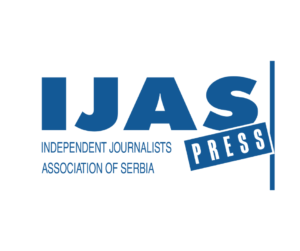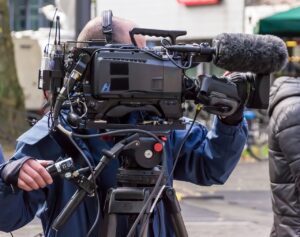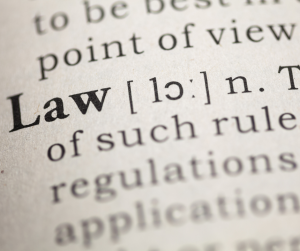Berlin, June 3, 2025—What journalists called a “witch hunt” atmosphere against government critics in Serbia one year ago has since escalated into a rise in attacks and threats against the press, following a deadly railway station collapse in November 2024 that triggered a widespread anti-corruption movement.
Initial protests demanding accountability for the tragedy have turned into a widespread movement against corruption and President Aleksandar Vučić’s increasingly authoritarian rule, and as a result, journalists have faced a surge in physical attacks, threats, online harassment, smear campaigns, and even spyware — often driven by Vučić’s supporters, government officials, and pro-government media.
Since the beginning of November, the Independent Journalists Association of Serbia (IJAS) has recorded 23 physical assaults. There have been 18 assaults so far this year, already surpassing the 17 in all of 2024. The IJAS has tallied a total of 128 of various types of attacks and threats so far this year, suggesting the overall number may soon exceed last year’s 166 cases.
“In the political crisis Serbia is going through since November, we are witnessing a sort of open warfare against independent media,” Jelena L. Petković, a freelance journalist specializing in covering media safety in the Western Balkans, told CPJ. “2025 might turn out to be the worst year on record for journalist safety in the country.”
Petković said U.S. President Donald Trump’s reelection, the rise of populist leaders like Viktor Orbán in neighboring EU states, and the crisis the USAID funding freeze has caused for Serbia’s independent media have emboldened Vučić to intensify his pressure on the press — frequently accusing journalists and civil society groups of being foreign agents and traitors. She noted that none of the attacks on journalists since last November have led to prosecutions, underscoring a broader pattern of impunity.
“This surge of attacks on independent journalists who hold the power to account in Serbia reflects a broader attempt to silence critical reporting amid a deepening political crisis,” said Attila Mong, CPJ’s Europe representative. “Serbian authorities must end the impunity for these attacks, take urgent steps to protect journalists, and put a stop to the hostile climate that emboldens those who seek to intimidate journalists.”
CPJ emailed questions to the press office of the presidency and to the Serbian Ministry of the Interior, which oversees the police, but did not receive any replies.
Below is a breakdown of the most serious attacks since November 1, 2024, based on CPJ’s review of cases documented by local press freedom groups:
Physical attacks
CPJ’s review of 15 physical attacks, affecting at least 23 journalists, found that the incidents mostly occurred during protests and ranged from attempts to snatch journalists’ phones to assaults that caused injuries. Some attackers were politicians or public officials, and several journalists reported that police failed to protect them.
On May 17, 2025, an unidentified individual attempted to knock the phone of Južne Vesti journalist Tamara Radovanović from her hand while she was documenting a rally by the ruling Serbian Progressive Party (SNS) in the southern city of Niš. Instead of protecting her, police removed her from the scene to “reduce tension,” without taking action against her attacker, according to the journalist.
On May 16, while filming an SNS event attended by party officials in the eastern village of Makovište, N1 TV camera operator Marjan Vučetić was attacked from behind by unknown individuals, who struck his back and neck, causing light injuries. Others insulted him, calling him a “traitor” and “foreign mercenary.”
On April 12, during an SNS rally in the capital Belgrade, pro-government supporters attacked a five-member KTV crew. Milorad Malešev, a technician, had three teeth knocked out, while others sustained scrapes and bruises. Police intervened only after camera operator Siniša Nikšić was assaulted, at which point they surrounded the journalists and told them to stop reporting, saying they couldn’t guarantee their safety.
On March 23, Saša Dragojlo, a journalist for the Balkan Investigative Reporting Network (BIRN), was beaten while covering a protest by a man later identified by Serbian media as a former boxer and SNS activist in Belgrade. Despite Dragojlo identifying himself as press and requesting help, police intervened only to prevent further escalation, but failed to take action against the attacker.
On November 27, 2024, during a pro-government demonstration in Belgrade, supporters insulted an N1 news crew and attacked journalist Jelena Mirković, hitting her shoulder and knocking the microphone from her hand. Reporter Aleksandar Cvrkutić’s camera was also struck as he filmed the scene.
On November 22, Nova TV reporter Ana Marković was lightly injured when demonstrators struck her phone from her hand while she was reporting in Belgrade.
On November 6, while live streaming a municipal assembly session in the northerntown of Kovin, journalist Miloš Ljiljanić of Kovinske Info was physically attacked by an SNS councilor, who shoved him, tried to grab his phone, and twisted his arm.
On November 5, in the northern city of Novi Sad, a group of masked individuals insulted an N1 TV crew and struck cameraperson Nikola Popović’s hand, causing him to drop and damage his camera. They also assaulted Euronews camera operator Mirko Todorović, knocking him to the ground. Police at the scene did not intervene.
Police violence, obstruction, detention
On May 17, 2025, police in Niš detained Nikola Doderović, a correspondent for Australian radio broadcaster SBS, as well as a journalism student accompanying him, for over an hour during a pro-government rally. After demanding their IDs, officers questioned them about their presence and activities, which Doderović said was unnecessary and arbitrary. Local press freedom groups called the detention a “clear form of intimidation.”
On May 16, police in Novi Sad briefly detained freelance photojournalist Gavrilo Andrić for “identification,” even though his helmet was marked as “press.” Earlier, officers had beaten him along with some protesters while he was documenting a blockade of the court and prosecutor’s office.
On April 28, police pepper-sprayed and beat journalist Žarko Bogosavljević of Razglas News while he was covering a protest, despite his wearing a press vest.
On April 10, prosecutors in Belgrade detained Dejan Ilić, a columnist for news site Peščanik, for a day on criminal charges of “causing panic and disorder.” The charges stem from comments he made during a March 29 Nova TV talk show, where he discussed political alternatives for Serbia, including a transitional government.
On March 14, several journalist crews traveling from neighboring Croatia and Slovenia to cover anti-corruption protests in Belgrade were briefly detained at the border and denied entry, before being sent back.
On February 25, police raided the premises of the Center for Research, Transparency and Accountability, an NGO operating the fact-checking platform Istinomer, for 28 hours as part of a corruption probe tied to USAID funding — allegations that local press freedom groups have denounced as politically motivated.
On January 17, police forcibly removed five journalists — with N1 TV, Nova TV, Radio 021, and the daily newspaper Danas — from Novi Sad City Hall, preventing them from covering an opposition-led protest.
Surveillance, spyware
On March 27, BIRN reported that two of its journalists had been targeted with Pegasus spyware in February. The attempted “one-click” attack failed, as the journalists did not open the malicious link.
Other threats, smears
In April 2025, a 60-minute video, produced by a pro-government NGO, aired on six national channels and circulated on social media, portraying journalists from N1 TV, Nova TV, and other outlets of publishing house United Group as foreign agents, extremists, and enemies of the state allegedly operating illegally in Serbia.
In February and March 2025, National Assembly President Ana Brnabić accused N1, Nova S, and Danas of spreading hatred and lies. Facing critical questions, Vučić asked a reporter from investigative outlet KRiK how much money he had received from USAID and the National Endowment for Democracy. The president also blamed N1 TV and its Brussels correspondent Nikola Radišić of contributing to a “color revolution,” a reference to pro-democracy movements that have emerged in various Eastern European countries, which Vučić has portrayed as a Western attempt to undermine Serbia’s sovereignty. Radišić was excluded from a press conference in Brussels as well.
Since November 2024, journalists working for independent media outlets N1 TV, Nova TV, and online platform Magločistač, as well as press freedom advocates, have received threats of physical violence and death.
Source: CPJ




